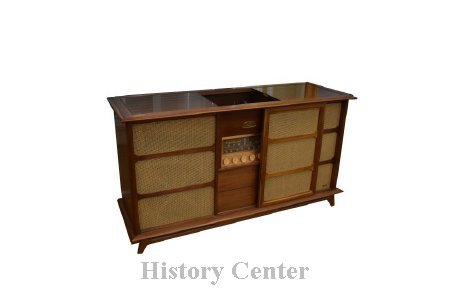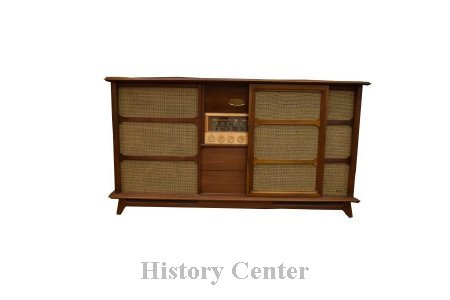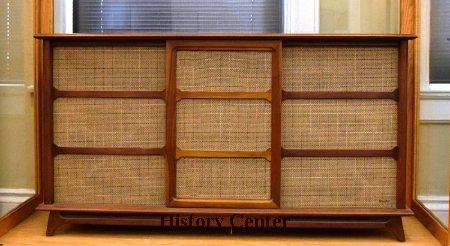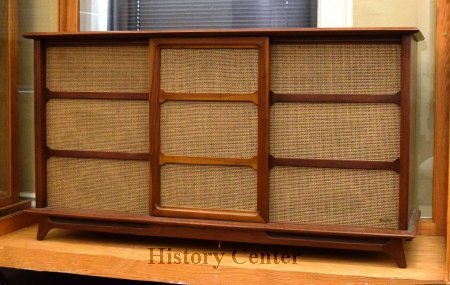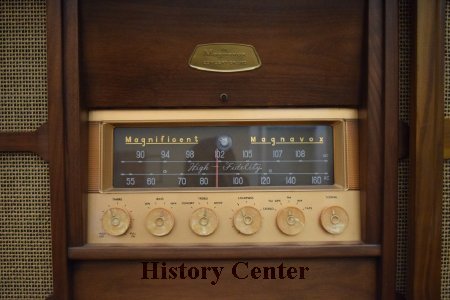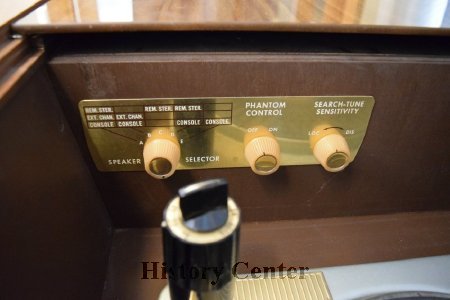Date:
c. 1961
Title:
Magnavox Phonograph-Radio Console
Description:
Magnavox is credited with coining the term "stereophonic" in 1935 by Austin Armer (1903-1984), an engineer in the Fort Wayne laboratories. He was struck by the "live dimension" of his new dual speaker system and coined the term "stereophonic," or "stereo," for the new system. Stereophonic sound is created when two separate tracks are recorded using multiple microphones and require two separate amplifiers and speakers for sound reproduction. In 1937, Magnavox engineers invented the first hi-fi (high-fidelity) phonograph. In 1958, they were the first company to produce instruments capable of playing new stereophonic records recreating the realism of a live performance. The Danish Modern style "Concert Grand" radio and phonograph console is made of walnut with two large speakers flanking each side producing 100 watts of audio power. When not in use, a sliding front panel covers the six volume, tuning and sound quality instrumentation dials. A sliding top panel covers the turntable.
Click to Enlarge

